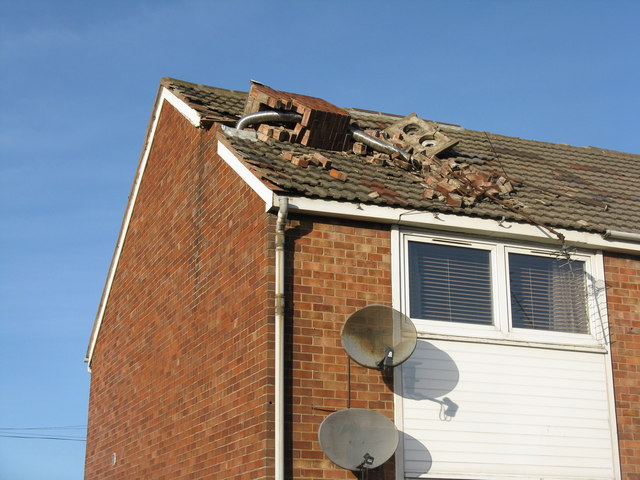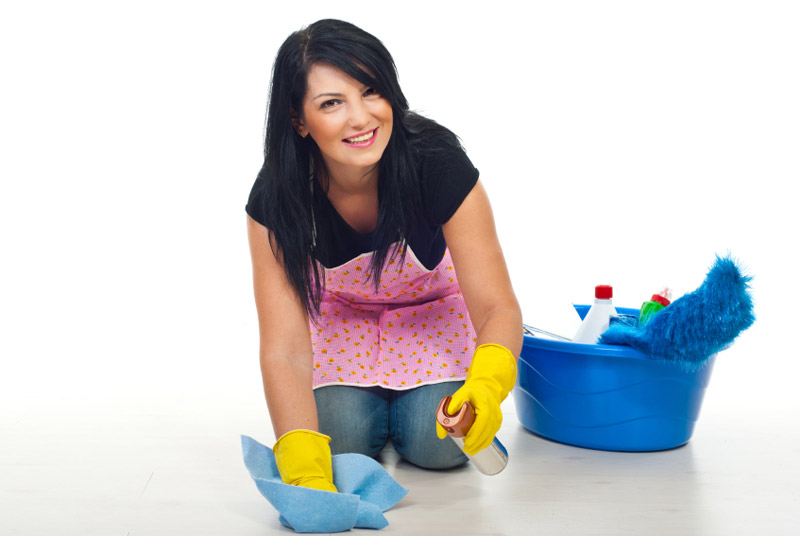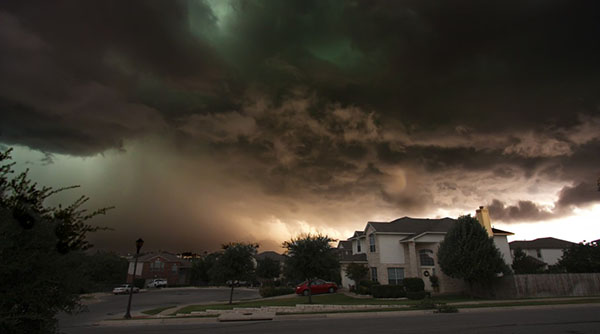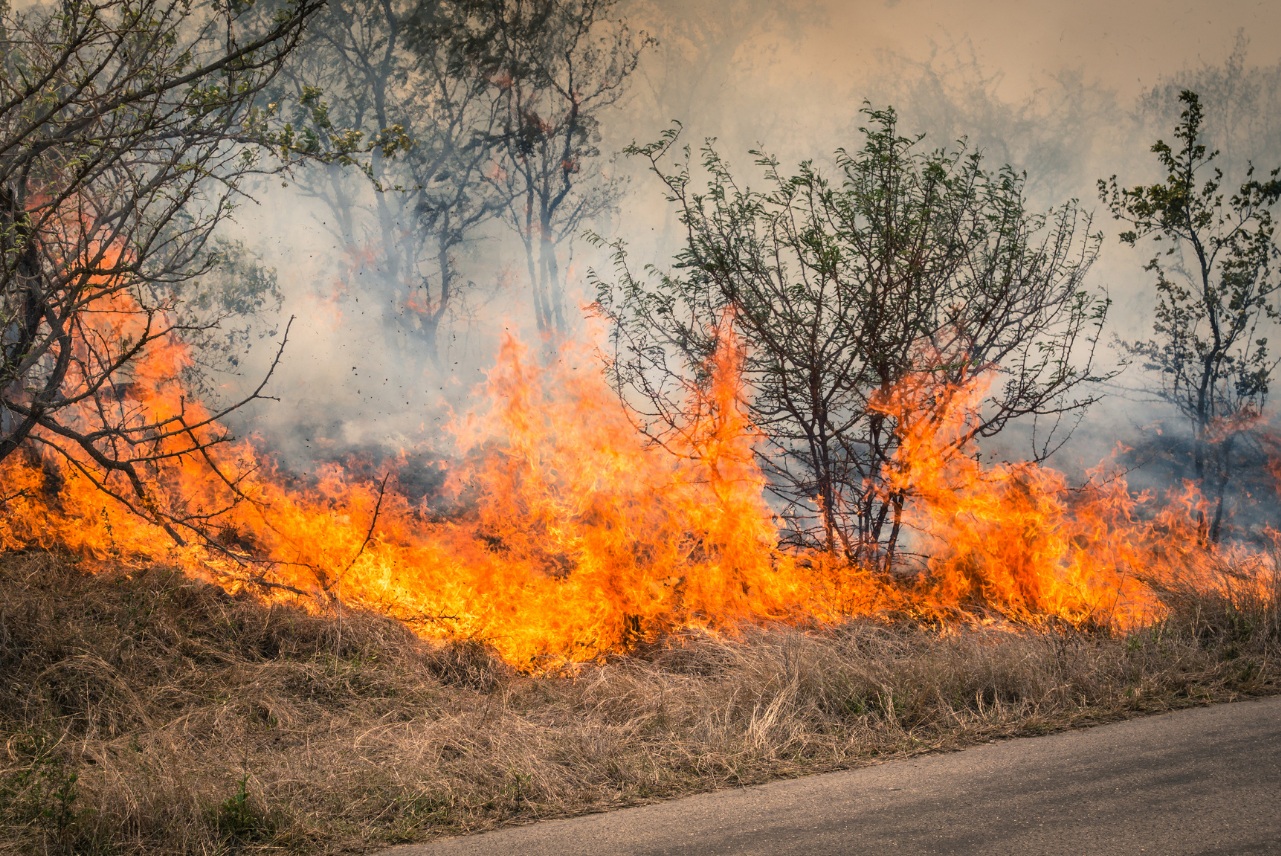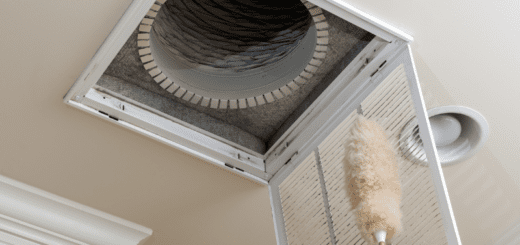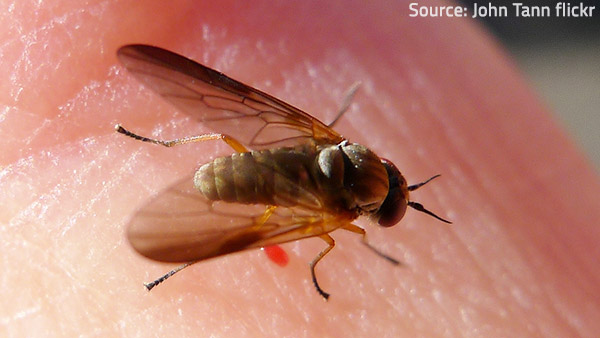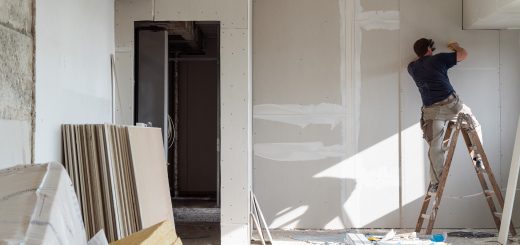How to Remove Drywall Mold: DIY Steps
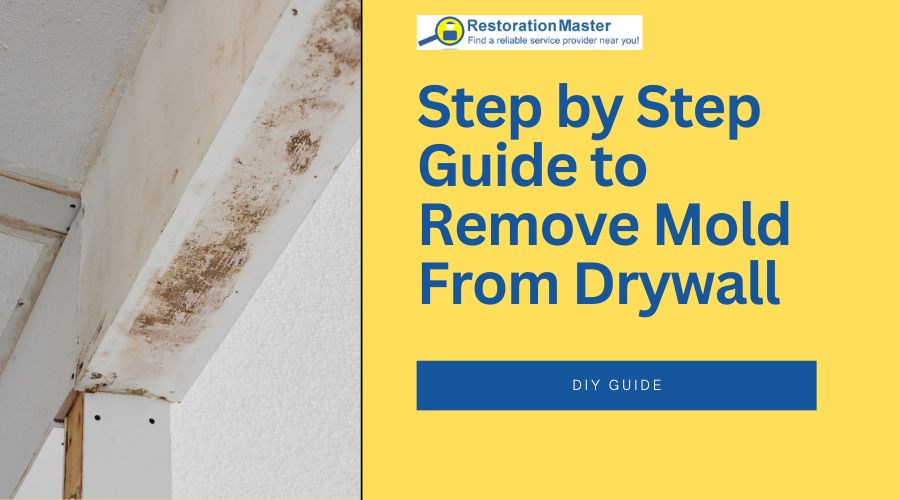
MoldMold is a type of fungus that grows in damp or humid conditi... More in your home or business can leadLead is a heavy metal that can be toxic to humans, especiall... More to extensive property damage, compromise indoor air qualityIndoor air quality (IAQ) refers to the condition of the air ... More, and pose serious health risks over time. Drywall, in particular, is highly susceptible to moldMold is a type of fungus that grows in damp or humid conditi... More because of its porousPorous describes a material that contains small openings or ... More nature. Once it becomes damp—whether due to high humidityHumidity is the amount of moisture or water vapor present in... More, leaks, or flooding—mold can grow quickly behind or on the surface of the wall.
If you’ve spotted moldMold is a type of fungus that grows in damp or humid conditi... More on your drywall, it’s important to act fast. In this guide, we’ll walk you through:
- How to identify moldMold is a type of fungus that grows in damp or humid conditi... More on drywall
- Types of moldMold is a type of fungus that grows in damp or humid conditi... More commonly found in homes
- When to clean vs. when to replace moldy drywall
- Step-by-step instructions to safely remove moldMold is a type of fungus that grows in damp or humid conditi... More from painted drywall
- MoldMold is a type of fungus that grows in damp or humid conditi... More cleaning solutionA solution is a homogeneous mixture of two or more substance... More options (natural and chemical)
- When to call a professional mold remediation specialist
How to Identify Mold on Drywall
MoldMold is a type of fungus that grows in damp or humid conditi... More on drywall often appears as stains or patches, typically found in areas with high moisture levels. It thrives in poorly ventilated spaces such as bathrooms, basements, kitchens, and laundry rooms. MoldMold is a type of fungus that grows in damp or humid conditi... More can also develop after water damage, as drywall absorbs standing water, creating the perfect environment for growth.
While visible dark patches on walls can help you identify moldMold is a type of fungus that grows in damp or humid conditi... More, it’s not always that easy. In many cases, moldMold is a type of fungus that grows in damp or humid conditi... More may grow hidden inside the walls. Here are some common signs that there could be moldMold is a type of fungus that grows in damp or humid conditi... More in your drywall:
- Stains and discoloration: If you see brown or yellow stains on your walls, you may have moldMold is a type of fungus that grows in damp or humid conditi... More behind them. If these spots are damp, this is a sign of water damage which means moldMold is a type of fungus that grows in damp or humid conditi... More is already there or is likely to appear.
- Deterioration of paint or wallpaper: If your paint or wallpaper is peeling, cracking, or bubbling, this may be caused by moldMold is a type of fungus that grows in damp or humid conditi... More growth. Damage such as warpingWarping is the bending, twisting, or distortion of materials... More, bowing, or bulging is also a sign of water damage which can leadLead is a heavy metal that can be toxic to humans, especiall... More to moldMold is a type of fungus that grows in damp or humid conditi... More growth.
- Odors: Detecting moldMold is a type of fungus that grows in damp or humid conditi... More growth is often easy, as it typically comes with a distinct musty odorAn odor is a smell, often detectable by the human nose, whic... More or a sense of stuffiness and stale air. These signs are strong indicators that moldMold is a type of fungus that grows in damp or humid conditi... More may be present. Additionally, pay attention to any unusual smells coming from electrical outlets, as this could suggest moldMold is a type of fungus that grows in damp or humid conditi... More hidden behind the walls.
What are the Different Types of Mold?
MoldMold is a type of fungus that grows in damp or humid conditi... More on drywall often appears as black patches, but its appearance can vary depending on the type of moldMold is a type of fungus that grows in damp or humid conditi... More. Here’s a breakdown of the most common types:
- Black moldMold is a type of fungus that grows in damp or humid conditi... More: This type of moldMold is a type of fungus that grows in damp or humid conditi... More often develops in homes that have experienced significant moisture damage. While it is not immediately harmful, prolonged exposure can leadLead is a heavy metal that can be toxic to humans, especiall... More to the production of mycotoxinsMycotoxins are toxic substances produced by certain types of... More, which may pose health risks if left untreated. Prompt remediation is essential to prevent potential harm.
- White mold: This type of moldMold is a type of fungus that grows in damp or humid conditi... More commonly thrives in basements and is often mistaken for efflorescence, a crystalline salt deposit that forms in the presence of moisture. To determine if the substance is white moldMold is a type of fungus that grows in damp or humid conditi... More, spray it with water. If it does not dissolve, it is likely moldMold is a type of fungus that grows in damp or humid conditi... More.
- Blue mold: This type of moldMold is a type of fungus that grows in damp or humid conditi... More has a bluish-green color and can appear within 24-48 hours after water damage has occurred. It does not require a lot of moisture, and it is usually found in drywall, wallpaper, ceilings, and insulationInsulation is a material used in buildings to reduce the tra... More affected by water damage or in wet places such as bathrooms.
- Green moldMold is a type of fungus that grows in damp or humid conditi... More: This type of moldMold is a type of fungus that grows in damp or humid conditi... More is easily recognizable by its green color and is typically found in dark, damp areas, such as bathrooms.
Does Moldy Drywall Always Need to Be Replaced?
Not always—it depends on the severity and location of the moldMold is a type of fungus that grows in damp or humid conditi... More.
You Can Clean the Mold If:
- It’s on a painted surface, not soaked through
- The affected area is small (less than 10 square feet)
- There’s no musty smell coming from inside the wall
- There’s no significant water damage
Replace the Drywall If:
- MoldMold is a type of fungus that grows in damp or humid conditi... More has penetrated the drywall surface
- The drywall is soft, bulging, or crumbling
- You’ve had floodingFlooding is the overflow or accumulation of water in areas t... More or long-term leaks
- There’s moldMold is a type of fungus that grows in damp or humid conditi... More growth on both sides of the drywall
Easy At-Home DIY Steps to Remove Mold from Drywall
Discovering moldMold is a type of fungus that grows in damp or humid conditi... More on painted drywall may seem daunting, but fortunately, it’s relatively easy to clean. The paint acts as a protective barrier, preventing the moldMold is a type of fungus that grows in damp or humid conditi... More from seeping into the drywall itself. All you need is a reliable cleaner and a bit of effort. However, before tackling the cleanup, it’s important to identify and resolve the source of moisture that caused the moldMold is a type of fungus that grows in damp or humid conditi... More in the first place. Once the underlying issue is addressed, follow these steps to effectively remove moldMold is a type of fungus that grows in damp or humid conditi... More from painted drywall:
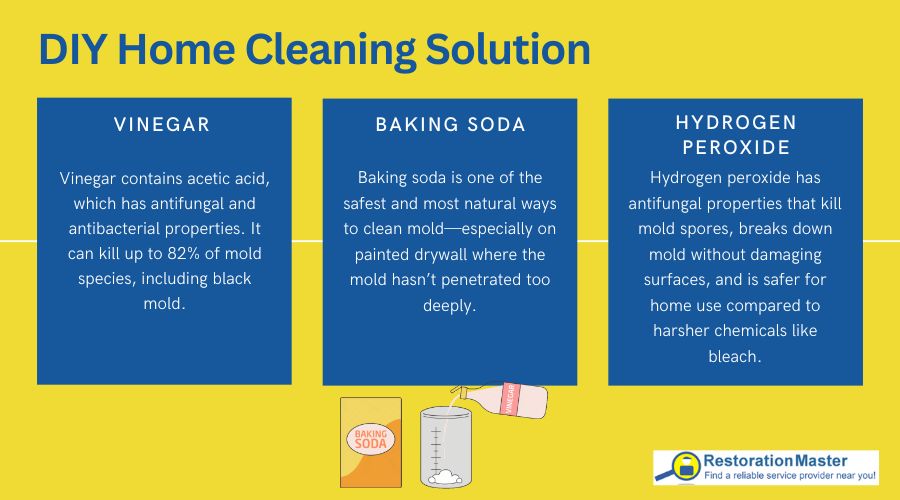
Choose or Prepare a Cleaning Solution
If you’re planning to make your own cleaning solutionA solution is a homogeneous mixture of two or more substance... More, it’s essential to avoid mixing it with other cleaners unless you’ve thoroughly researched the potential risks. Some combinations can be hazardous. Alternatively, there are plenty of chemical and natural cleaning solutions readily available for purchase. Here are a few options to consider:
- Bleach and Water: Mix one part bleach with three parts water. This solutionA solution is a homogeneous mixture of two or more substance... More is strong and effective but should be used in a well-ventilated area.
- Vinegar and Water: Combine equal parts white vinegar and water. Vinegar is a natural disinfectantA disinfectant is a chemical substance used to kill or inact... More and safe for most surfaces.
- Baking Soda SolutionA solution is a homogeneous mixture of two or more substance... More: Mix one part baking soda with five parts water. This is a gentle, non-toxic option.
- Hydrogen Peroxide: Use 3% hydrogen peroxide directly from a spray bottle. It helps kill moldMold is a type of fungus that grows in damp or humid conditi... More and disinfect the surface.
- Concrobium MoldMold is a type of fungus that grows in damp or humid conditi... More Control: This store-bought product is designed specifically to eliminate moldMold is a type of fungus that grows in damp or humid conditi... More and prevent it from coming back.
Important: Never mix cleaning chemicals like bleach and ammonia. This can create dangerous fumes.
Apply the Cleaning Solution and Scrub
Spray the affected area generously with your chosen cleaner. Let it sit for about 10 to 15 minutes so it can break down the moldMold is a type of fungus that grows in damp or humid conditi... More. Then, gently scrub the surface using a spongeA sponge is a porous material used to absorb liquids or clea... More or brush. After scrubbing, wipe the area clean with a towel or cloth to remove any leftover moldMold is a type of fungus that grows in damp or humid conditi... More and residueResidue is any leftover material, such as soot, dust, or che... More.
Dry the Area Completely
Use fans or a dehumidifierA dehumidifier is a device that removes excess moisture from... More to dry the wall thoroughly. MoldMold is a type of fungus that grows in damp or humid conditi... More thrives in moisture, so it’s important that the area is completely dry to prevent it from growing back.
Monitor for Any Signs of Return
Over the next few days or weeks, check the area to make sure the moldMold is a type of fungus that grows in damp or humid conditi... More doesn’t return. If it does, or if the stain spreads or worsens, it could mean that moldMold is a type of fungus that grows in damp or humid conditi... More is growing inside the drywall. In that case, you may need to cut out and replace the affected section.
How to Prevent Mold on Drywall
Once you’ve dealt with moldMold is a type of fungus that grows in damp or humid conditi... More, the last thing you want is for it to return. The key to preventing moldMold is a type of fungus that grows in damp or humid conditi... More is moisture control and a bit of regular upkeep. Here’s what you can do to keep it away for good:
- Keep HumidityHumidity is the amount of moisture or water vapor present in... More Low: MoldMold is a type of fungus that grows in damp or humid conditi... More thrives in humid air. Try to keep indoor humidityHumidity is the amount of moisture or water vapor present in... More below 50%. Use a dehumidifierA dehumidifier is a device that removes excess moisture from... More, especially in damp areas like basements or laundry rooms.
- Fix Leaks Immediately: Even a small leak behind the wall can feed moldMold is a type of fungus that grows in damp or humid conditi... More. Check plumbing, roofs, windows, and foundation cracks regularly—and fix any issues right away.
- Improve Airflow: Good ventilationVentilation is the process of exchanging or circulating air ... More helps dry out moisture-prone areas. Open windows when weather allows, use fans, and run exhaust fans in bathrooms and kitchens.
- Use Mold-Resistant Materials: If you’re remodeling, use mold-resistant drywall and paint in high-humidity areas. Mold-resistant paint additives can also help protect existing walls.
- Dry Wet Areas Promptly: Don’t let water sit—on bathroom walls, in your basement, or under a leaky pipe. Wipe surfaces dry and clean up spills as soon as they happen.
Call a Mold Removal Expert When DIY Doesn’t Work
MoldMold is a type of fungus that grows in damp or humid conditi... More on drywall is not just an aesthetic concern, it’s a serious issue that can leadLead is a heavy metal that can be toxic to humans, especiall... More to structural damage and health problems if left untreated. Recognizing the early signs of moldMold is a type of fungus that grows in damp or humid conditi... More, understanding the different types, and knowing when to clean or replace affected drywall are key to maintaining a safe and healthy environment. Whether you’re tackling minor surface moldMold is a type of fungus that grows in damp or humid conditi... More or addressing deeper infestations, taking swift, informed action is crucial. By identifying the source of moisture and using the right removal methods, you can effectively combat moldMold is a type of fungus that grows in damp or humid conditi... More and protect your home or business for the long term.
If you find moldMold is a type of fungus that grows in damp or humid conditi... More growth in your home, it is crucial to call a professional to remove it immediately. Mold remediation specialists can effectively contain and remove moldMold is a type of fungus that grows in damp or humid conditi... More from any surface or materials, including drywall, using advanced remediation techniques. They can also repairRepair is the act of fixing or restoring damaged property, m... More the damage caused by moldMold is a type of fungus that grows in damp or humid conditi... More and ensure that the home is restored to safe conditions.

